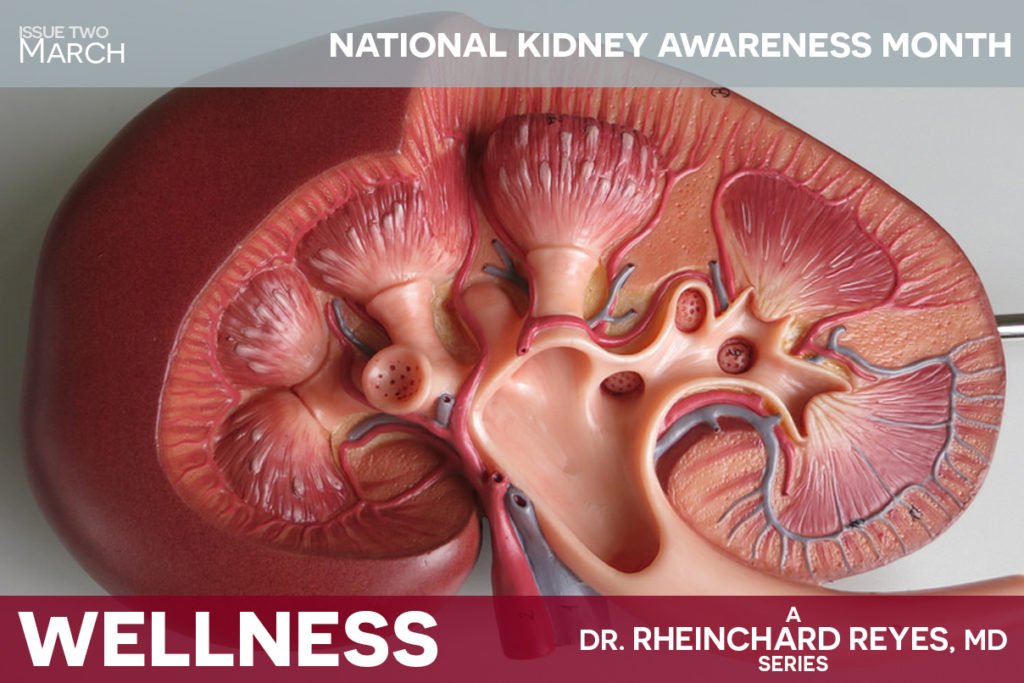THE KIDNEYS
The two funny-looking, bean-namesake organs we have on either side of the spine are our hard-working companions. For best directions, the right kidney is just underneath our liver, while the left one is located below the diaphragm
We know they are our filtration system, but what do kidneys do exactly? Well, for starters, they…
- Regulate bodily fluid levels, namely extra water and waste in the blood, which we then expel as urine.
- Keep blood minerals and chemicals in check.
- Regulate blood pressure.
- Activate Vitamin D to keep bones healthy and strong.
- Inform your body to produce red blood cells.
- Help children’s normal growth patterns.
MARCH IS NATIONAL KIDNEY MONTH
One in three Americans is at risk of developing kidney disease, which is why March has been declared National Kidney Month in the US. We will be taking a look at associated symptoms and risk factors of renal (kidney) insufficiency or disease, as well as some of the ways of maintaining adequate renal health.
Symptoms typically describe a number of trouble signs that you should be aware of in order to detect potential chronic kidney disease (CKD), which, as always, is best diagnosed early.
- Urination concerns
- difficult or painful
- increased need to go, especially at night
- Urine concerns
- foamy
- presence of blood, all the way from pink to dark urine
- Fatigue and weakness
- Increased thirst
- Swelling: face, abdomen, hands, ankles, feet
- Puffy eyes
There are five main risk factors that help assess your risk, both in self and family.
- Diabetes
- High blood pressure
- Cardiovascular disease
- History of kidney disease, diabetes, or high blood pressure
- Age 60 and over
Taking a closer look at the link between diabetes and renal disease, we discover that one of the vascular abnormalities linked to diabetes is known as diabetic nephropathy or diabetic kidney disease (DKB). This occurs when diabetes damages blood vessels and sundry cells in the kidneys. Of course, this wicked link can get treated if diagnosed early or to avoid it from getting worse. There is, evidently, adequate medicine you can take. Close monitoring will be an important part of the equation. But most of all, there are a number of lifestyle changes that you will need to adopt. Now, this last step comes in the form of recommendations, not only for those patients with DKB, but for all CKD patients and the entire population at large.
Stay healthy by…
- Keeping your high blood pressure in check
- Keeping your glucose levels in check (diabetics especially)
- Reducing salt intake
- Moderating protein intake
- Avoiding NSAIDs —nonsteroidal anti-inflammatory drugs— among which are some of the most common painkillers.
- Getting the annual flu shot
- Exercising regularly
- Maintaining an adequate weight
- Having a healthy diet
- Quitting smoking
- Drinking in moderation
- Staying hydrated
- Monitoring cholesterol
- Going for an annual physical
- Knowing your family medical history in depth
Sources:
- https://www.kidney.org/content/national-kidney-month
- https://www.davita.com/education/kidney-vocabulary
- https://www.webmd.com/diabetes/head2toe-15/diabetes-kidney-disease
- https://www.heart.org/en/health-topics/diabetes/why-diabetes-matters/kidney-disease–diabetes


